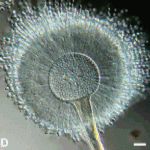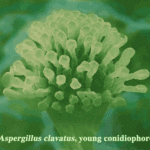Date: 26 November 2013
Born 75 years ago, Pt HK had 3 episodes of tuberculosis as a child and teenager, being treated with PAS and streptomycin. He suffered a ‘bad chest’ all his life and retired aged 54. Presenting with worsening and more frequent chest infections, he was referred with ‘bronchiectasis and Aspergillus sensitisation’. A diagnosis of chronic pulmonary aspergillosis was made in June 2009 on the basis of his chest radiograph and strongly positive Aspergillus precipitins (IgG antibodies) (titre 1/16). He also had Pseudomonas aeruginosa colonisation. His oxygen saturation was 87% and his pO2 6.8, pCO2 6.2 KPa.
His chest radiograph (see above, November 2009) was reported as showing; “ The lung fields are over-inflated. Bilateral apical fibrotic change secondary to old TB. No cavity seen.” At clinic, bilateral apical cavities were seen, with some associated pleural thickening at the left apex, without any evidence of a fungal ball.
He started posaconazole 400mg twice daily with therapeutic levels at subsequent visits. Sputum cultures never grew Aspergillus. Over the following 9 months he had no chest infections requiring antibiotics, his breathlessness worsened gradually and he remained easily fatigued. His Aspergillus antibody titres fell. Overall he felt better, but was concerned about declining respiratory status.
Copyright:
Fungal Research Trust
Notes: n/a
Images library
-
Title
Legend
-
Aspergillus flavus Link. A colonies after 1 weekB,C conidial heads x 920D Conidia x920 E Conidial head x920
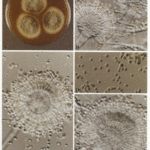
-
Patient diagnosed with Stage C Chronic Lymphocytic Leukaemia, treated in the MRC CLL4 study, with prednisolone for 4 weeks followed by oral chlorambucil for 7 days. Patient developed severe pneumonia due to pseudomonas and staphylococcus. Following treatment with broad spectrum antibiotics and 1 week of Abelcet, patient was readmitted with headache, disorientation and fever. CT brain scans showed 3 ring enhancing lesions, aspirated material showed neutrophils but grew aspergillus. Patient now improved on Abelcet (4 mg/kg) and oral itrconazole suspension 200mg b.d.
Thanks to Richard Chasty, Consultant Haematologist, North Staffordsire Hospital, UK.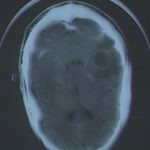 ,
, 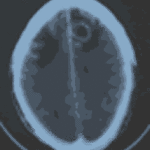

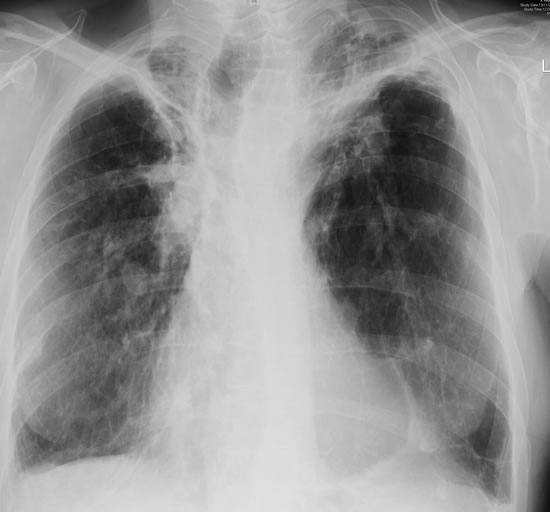
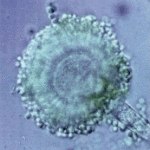
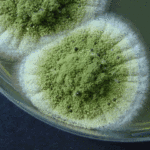
![Asp[1]niger Asp[1]niger](https://www.aspergillus.org.uk/wp-content/uploads/2013/11/Asp1niger-150x150.gif)


